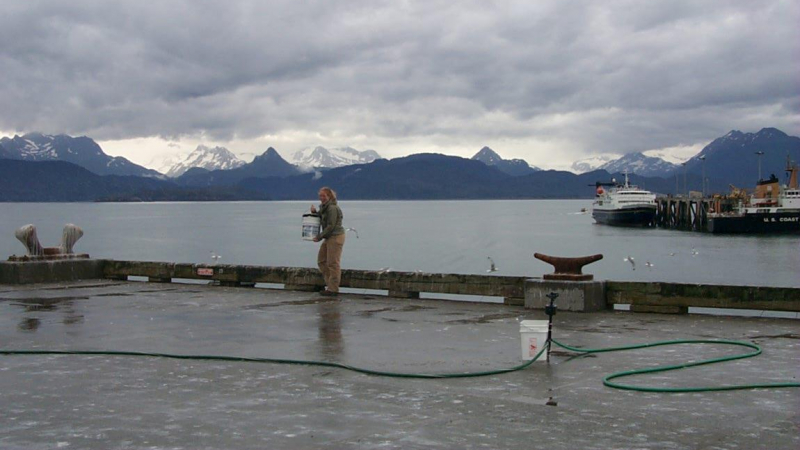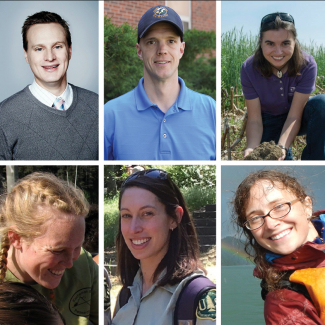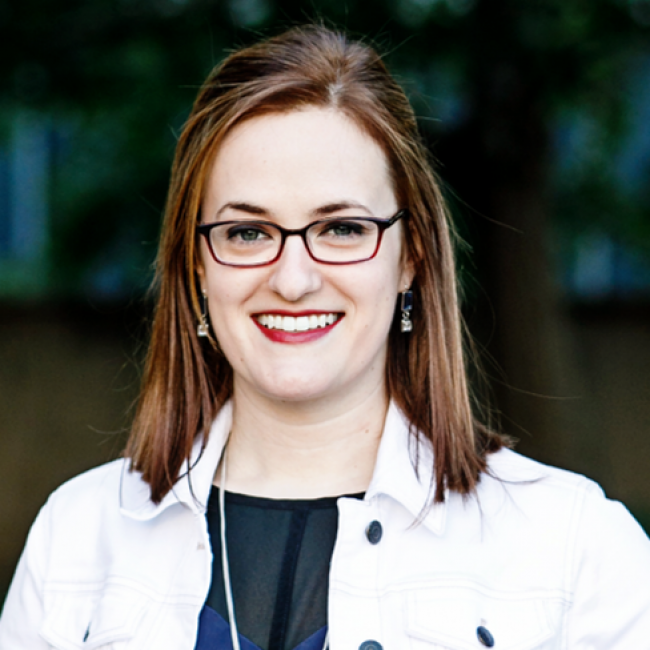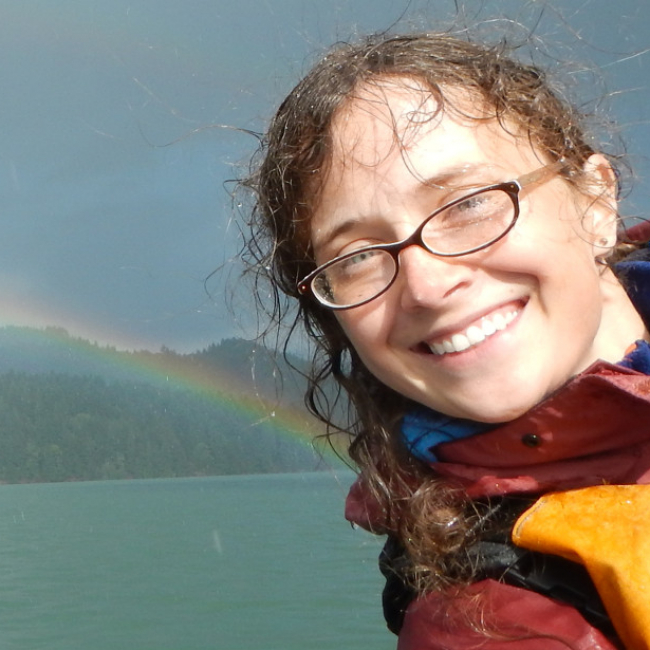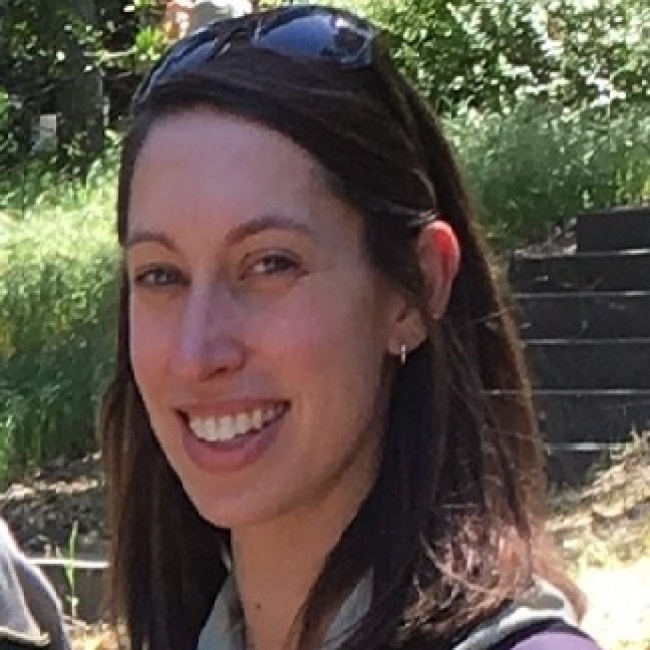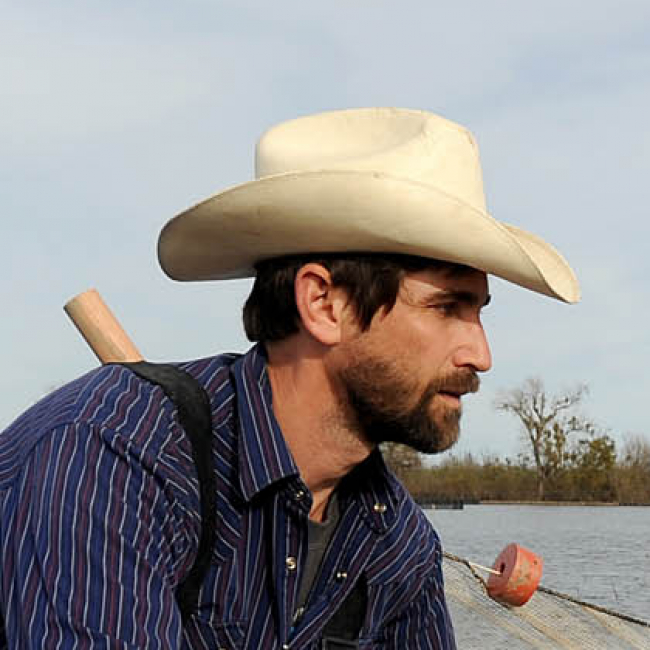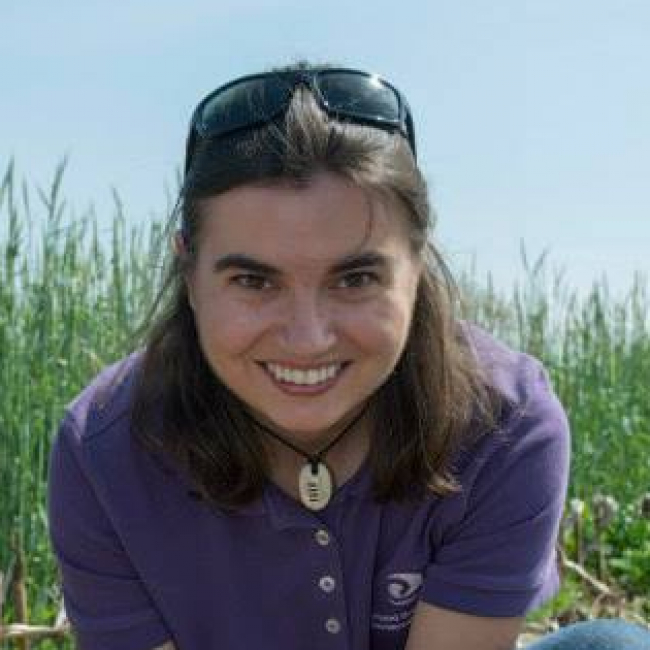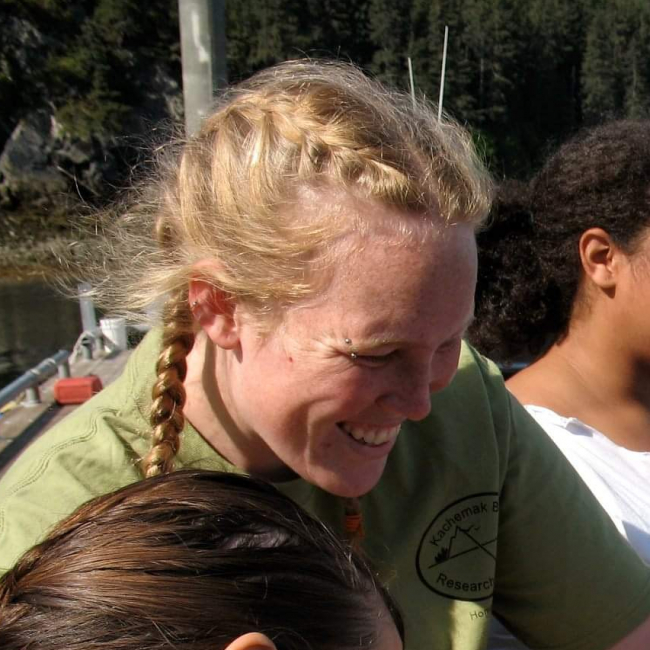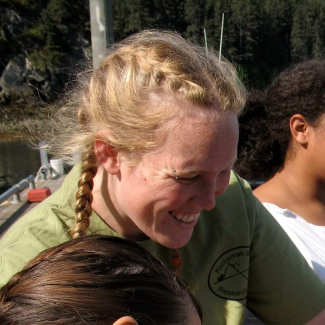
Kaitlin Schott
The facts
Hollings internship office and topic
Kachemak Bay National Estuarine Research Reserve establishing a plankton monitoring program and studying salmon
Education
- B.S. in forest sciences and biology from University of Wisconsin-Madison.
- M.S. in forest management from University of Alberta
Current career
Soil Conservationist for the United States Department of Agriculture Natural Resources Conservation Service (USDA-NRCS)
Having an adventurous start to my career allowed me to move home with a new appreciation for the unique biological features of the area where I grew up while incorporating lessons learned from other places and cultures.
What was your career path?
I graduated from University of Wisconsin-Madison with a bachelor's degree in forest sciences and biology in 2007. After that, I spent two years as an agroforestry volunteer in Paraguay with the Peace Corps. I then pursued a master’s in forest management, which I earned in 2013. For a few years following that, I worked as a Restoration Ecologist in the private sector and then rejoined the federal government in 2015 as a Soil Conservation Technician with the USDA-NRCS. In 2017, I was promoted to a Soil Conservationist and remain in that career today.
How did Hollings impact your career path?
The Hollings Scholarship program allowed me to explore biological science options outside of those specific to the forestry degree I was completing. By participating in projects including developing a volunteer plankton monitoring program and surveys of juvenile salmon and their habitats I was able to expand my knowledge and understanding of the interconnectivity of terrestrial and aquatic ecosystems. As part of the establishment of a volunteer-based plankton monitoring program during my Hollings internship, I worked with oyster farmers in the Kachemak Bay. This was the first time I worked with food producers and was a particularly rewarding experience. I subsequently served as an agroforestry volunteer with the Peace Corps and ultimately am working with farmers, ranchers, and private forest landowners in my current position with the USDA-NRCS.
Do you still use skills learned during your internship or other aspects of your Hollings experience today?
The most important skills that I gained during my Hollings internship were collaboration and communication. I was given the chance to work with science professionals and community members. I learned the importance of listening to and incorporating feedback from a variety of stakeholders to achieve a common goal.
What advice do you have for current and future Hollings scholars?
My advice would be to let the adventure of your Hollings internship continue! I have been fortunate enough to travel widely through work and volunteering in my field, yet currently live in the same beautiful region I grew up in. Having an adventurous start to my career allowed me to move home with a new appreciation for the unique biological features of the area where I grew up while incorporating lessons learned from other places and cultures.
What was your favorite or most memorable moment from your Hollings experience?
One of my favorite experiences from my Hollings internship was taking a seaplane to an isolated bay with a fish biologist to complete juvenile salmon trapping. We camped overnight on a beach and flew back to Homer the next day.
I also participated in a week-long physical oceanography cruise that got me back to land with mere hours to catch my flight to Washington, D.C., for the Hollings student symposium. On the cruise I saw humpback whales every day and was able to (safely) observe gas plumes from the Augustine Volcano during its eruptive phase.
During my internship, I lived in a bunkhouse with views across the Kachemak Bay. All summer long I saw a moose and her twin calves near the bunkhouse. We all kept our distance. Until one day when I looked outside and saw the moose and her calves right outside my door. Feeling terrible about potentially arriving late to work, I called the office of the Reserve I was interning at and my coworker, who was an Alaska native, told me not to worry at all, just wait for the moose and her calves to move on and come in when I could.
Ok, one last experience. A graduate student was completing surveys of the streams and vegetation surrounding known salmon habitat. I went out on several day trips with this project as my internship schedule allowed. One day we drove over an hour in, had to ride quads (ATVs) another half an hour, and then walked 15-20 minutes to our site. As we were setting up to collect data, a team member found a dead moose calf that a bear had cached along the stream. Luckily, a lifelong Alaskan was out with us and immediately recognized how fresh the cache was and the threat of being that close to a Grizzly bear’s food. We immediately packed up and left the site. It’s lucky we did, because on the way out we noticed a bear bed site and we saw the bear arrive at our parking spot just after we got back on the quads. That site was a no-go for the rest of the season and a replacement had to be selected for the study.
Spending a week on a boat, observing an active volcano, and flying on a seaplane were all firsts for this Midwesterner!
